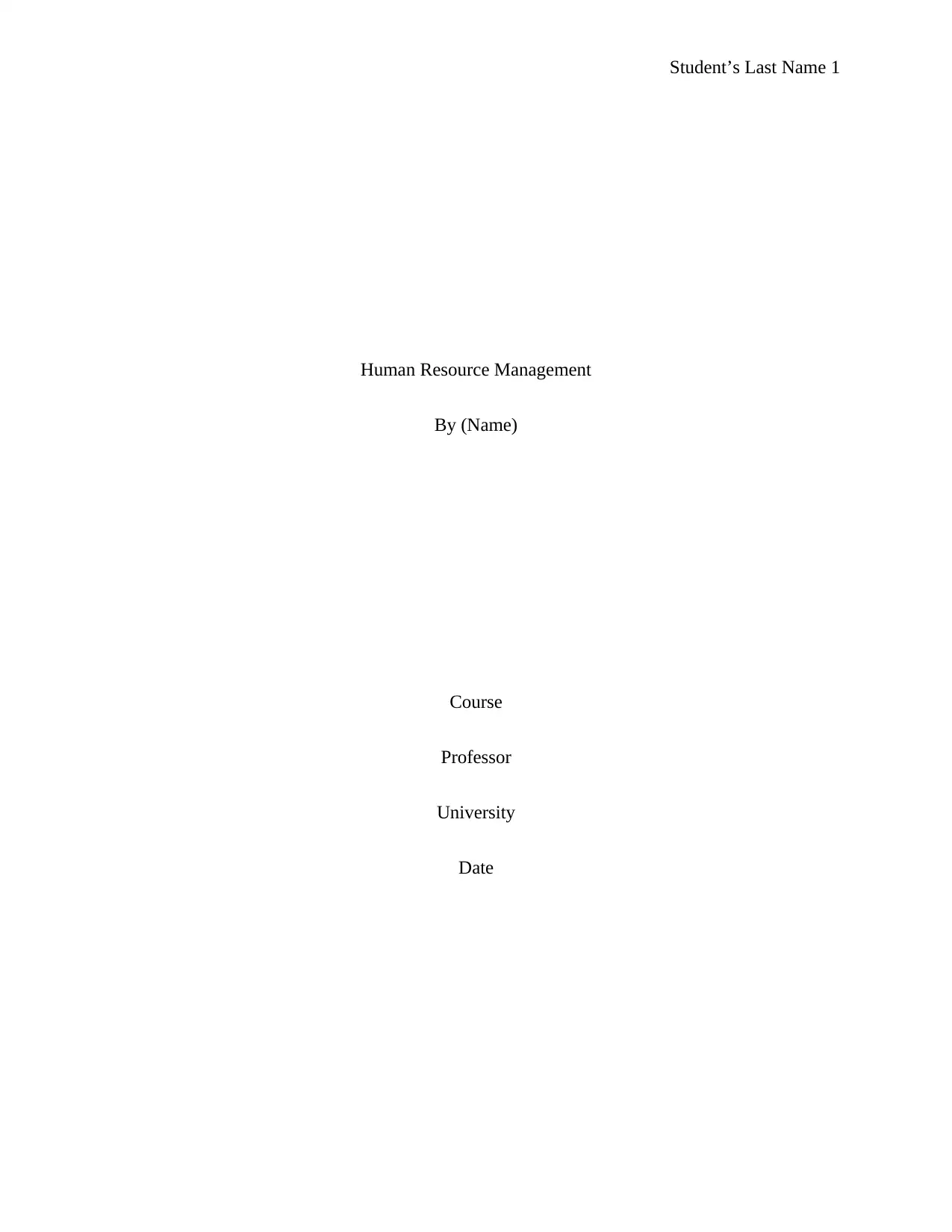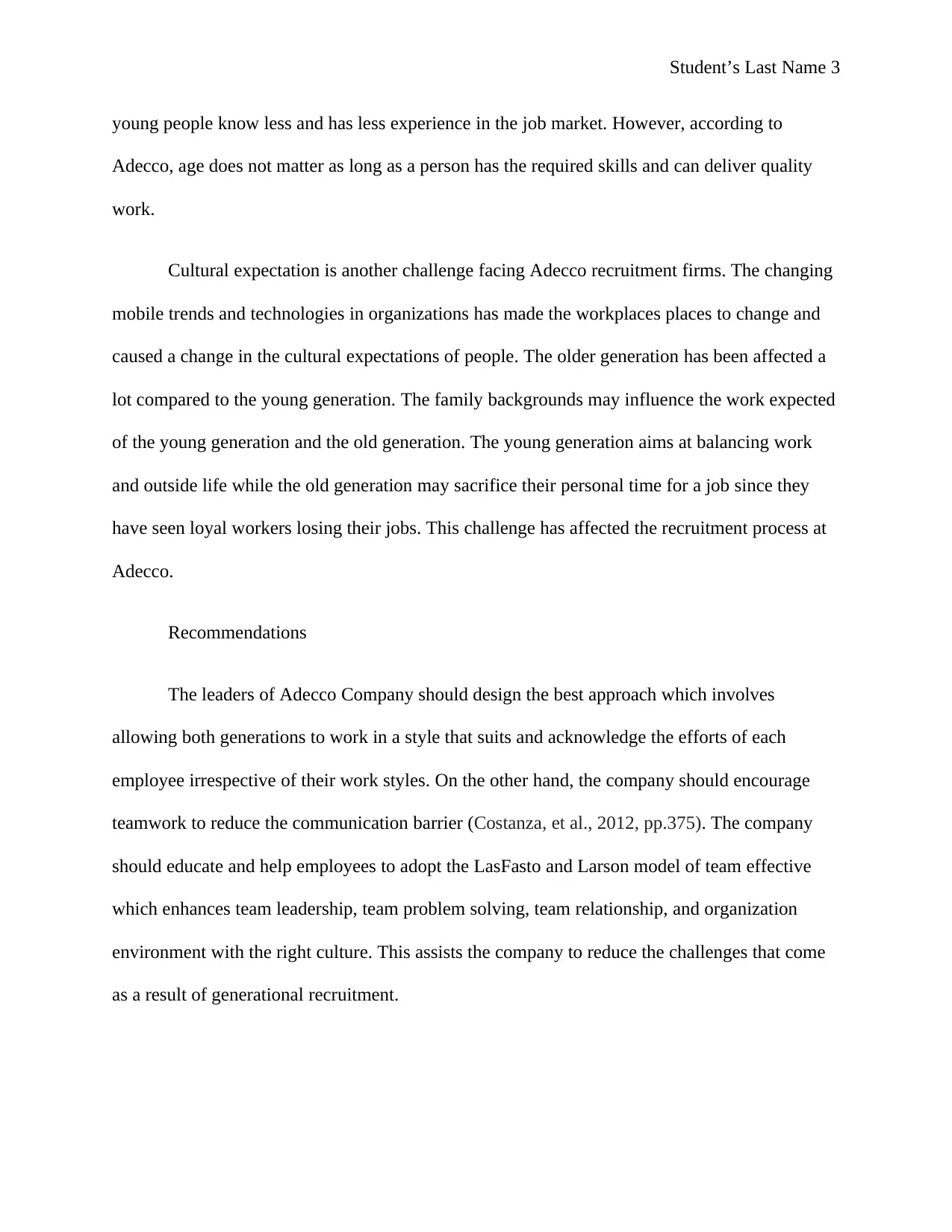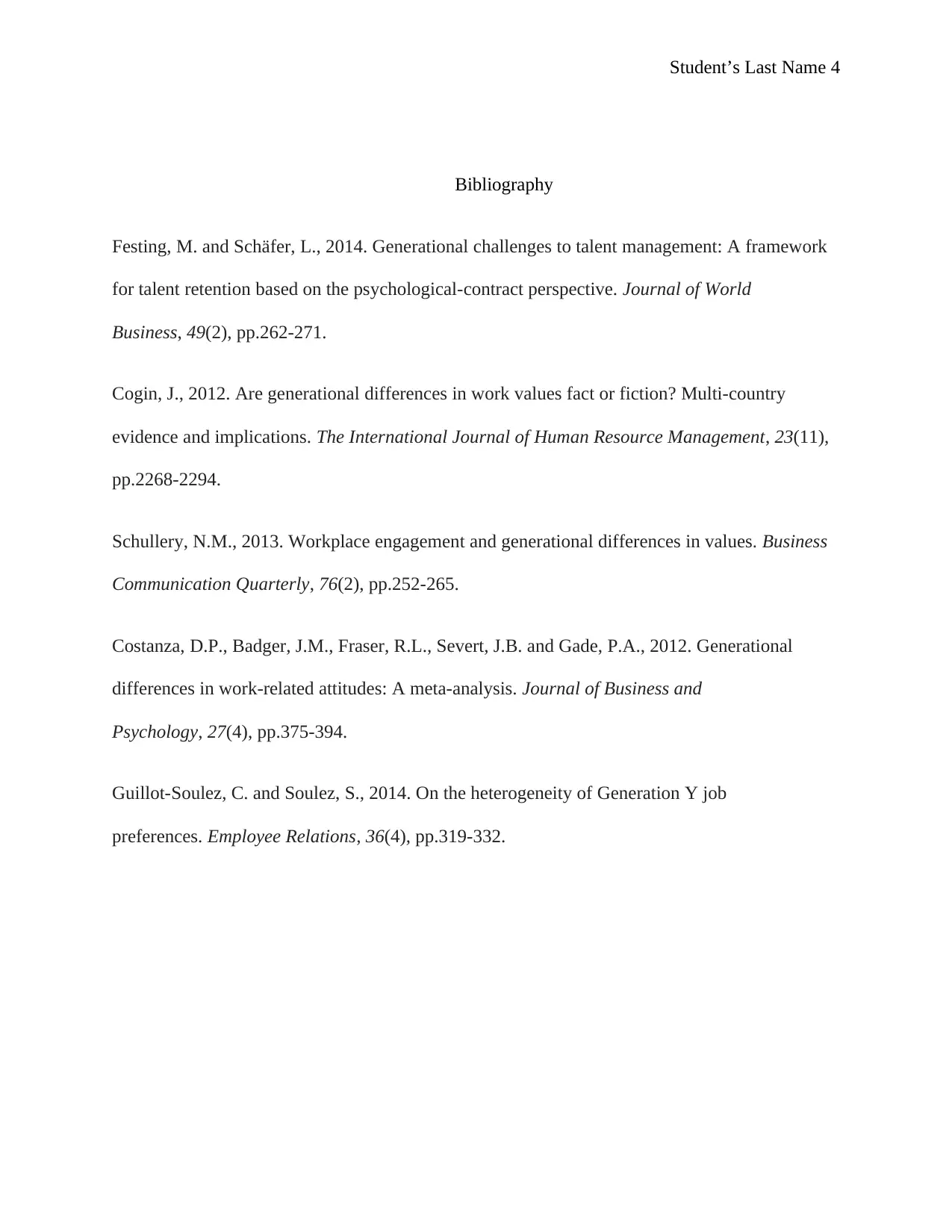HRM Report: Challenges of Generational Differences at Adecco Company
VerifiedAdded on 2023/03/23
|4
|802
|74
Report
AI Summary
This report examines the challenges of generational differences within the context of Human Resource Management, specifically focusing on the Adecco Company. It highlights the communication style disparities between younger and older employees, with Gen Y favoring digital communication methods and Gen X preferring traditional channels. The report also addresses negative stereotypes associated with different age groups and the impact of changing cultural expectations, including work-life balance preferences. The author recommends that Adecco leaders adopt inclusive approaches, promote teamwork, and implement models like the LasFasto and Larson model to enhance team effectiveness and mitigate generational conflicts. The report concludes by referencing several academic sources to support the analysis and recommendations. This assignment aims to provide insights into managing a diverse workforce and fostering a productive work environment.
1 out of 4










![[object Object]](/_next/static/media/star-bottom.7253800d.svg)